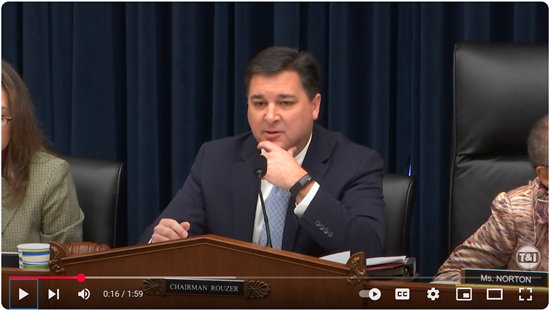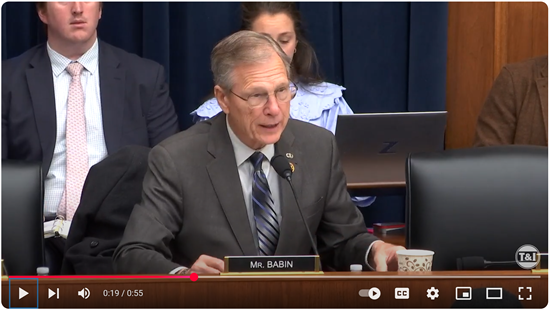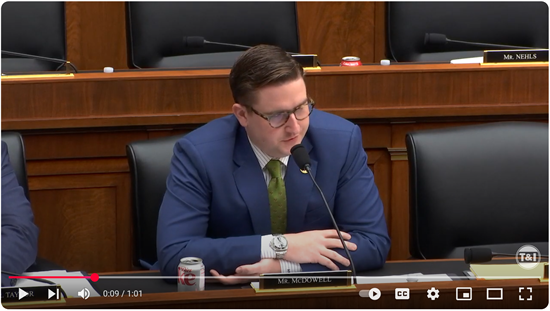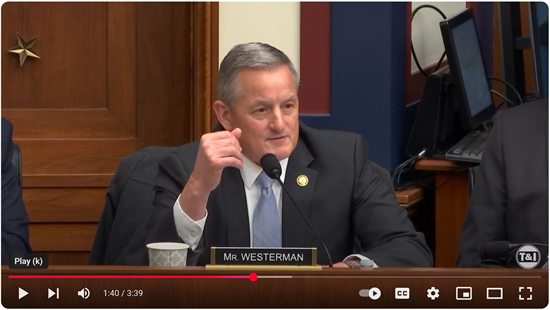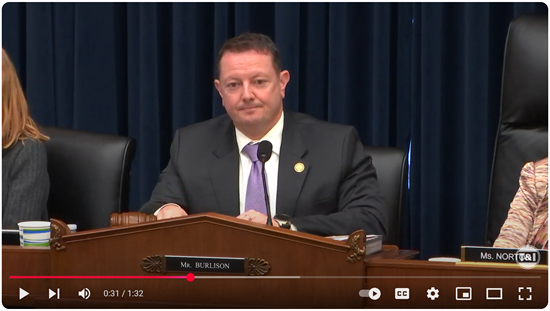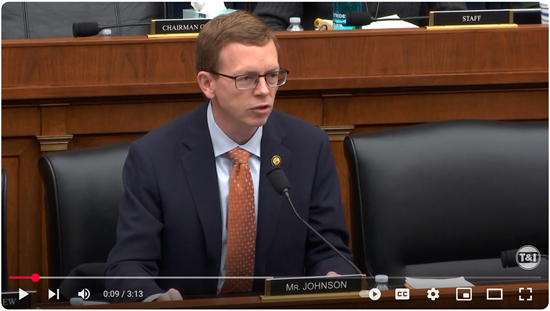Press Releases
Stakeholders Discuss Principles for Highway Programs ahead of Reauthorization at Subcommittee HearingAt a Highways and Transit Subcommittee hearing today, stakeholders who depend upon a safe and efficient national highway system outlined key principles for a multi-year surface transportation reauthorization bill, particularly federal highway programs. Witnesses highlighted some common themes, including a need for a timely, multi-year bill that provides long-term certainty for states to plan projects, as well as the needed flexibility to address their most critical priorities. The panel discussed the benefits of funding core formula highway programs compared to discretionary grant programs, which are frequently more cumbersome and restrictive. Witnesses also urged the Subcommittee to continue slashing red tape to help move projects forward, noted the need for sustainable funding for the Highway Trust Fund, and called for all highway users to pay into the Highway Trust Fund. American Association of State Highway and Transportation Officials (AASHTO) Executive Director Jim Tymon, asked to discuss differences between formula programs and discretionary grant programs stated, “the entire administrative process around discretionary grants has shown to be slow, burdensome, and less efficient in turning federal funds into projects and benefits compared to the deployment of formula funding provided to state DOTs. New discretionary grant programs take considerable time and resources for USDOT to operationalize…. On the other side of the table from USDOT, it is also costly—both time and dollar-wise—to apply for discretionary grants. For state and local agencies, each discretionary grant application can cost $200,000 to develop, while the chance of landing such a grant is less than 10 percent, creating significant uncertainties and challenges in developing a multiyear capital program.” Highways and Transit Subcommittee Chairman David Rouzer (R-NC) raised this line of questioning with Tymon, and he also asked Tymon to elaborate about how formula programs allow state departments of transportation to best utilize their expertise: Vulcan Materials Company Vice President for External Affairs and Corporate Communications Janet F. Kavinoky, testifying on behalf of the National Stone, Sand & Gravel Association, highlighted the reduction in states’ flexibility associated with discretionary programs compared to formula programs: “In contrast, we have observed a perceptible erosion of the principle of state and local control of decision making in recent Federal-aid Highway Program reauthorizations—particularly the IIJA. Allocated programs, with increasingly detailed eligibility defined by federal agencies, as well as additional apportioned programs with specified eligibility, limit state and local decision-making flexibility. New programs can be slow to implement and draw funding away from state priorities through compartmented funding eligibility. Our experiences with the IIJA’s new programs’ slow obligation rates, both formula and allocated, bear out the need to avoid new programs or program expansions.” Witnesses were also frequently asked to discuss difficulties posed by regulatory burdens, unworkable mandates, and the impacts of red tape on project delivery. Cargo Transporters, Inc. President and CEO Dennis Dellinger, testifying on behalf of the American Trucking Associations, stated, “We also remain deeply concerned about the impacts that burdensome, unrealistic environmental regulations have on the trucking industry’s ability to efficiently and effectively meet the nation’s supply chain demands. Of particular concern is the reckless rush to force electrification upon the nation’s heavy-duty trucking fleet despite the lack of supporting electrical infrastructure to generate and transmit the necessary power, the inadequate availability of appropriate charging facilities for Class 8 trucks nationwide, and the extraordinary cost and duty-cycle challenges of new electric trucks.” Dellinger recommended a more commonsense approach to regulations aimed at reducing emissions, versus “unworkable mandates” that push often immature and unfeasible technologies, such as the Greenhouse Gas (GHG) Phase 3 standards and California’s nitrogen oxide emissions regulations. Rep. Brian Babin (R-TX) and Dellinger discussed the impacts of a patchwork of emissions standards across states on interstate trucking operations, and Rep. Addison McDowell (R-NC), specifically asked about the impacts that the California Air Resources Board's (CARB's) Advanced Clean Truck Rule, which mandates the sale of zero-emission vehicles, will have on interstate trucking companies: Rep. Bruce Westerman (R-AR) and Rep. Eric Burlison (R-MO) both questioned Tymon about how we can get more bang for our federal buck given the amount of red tape involved in project approvals: Members also raised a number of trucking policy issues, including the need to increase the amount of safe truck parking, as well as the need to foster an environment that is more encouraging of young people to enter the workforce as truck drivers. Rep. Dusty Johnson (R-SD) asked Dellinger about the feasibility of allowing 18- to 20-year old truck drivers to operate across state lines: Click here for more information from today’s hearing. |







